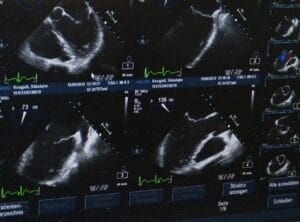Flat nipple is a condition that both men and women can experience. It can be observed in one nipple or both of them. Approximately 10 to 20 percent of the general population has a flat nipple. While the appearance of a flat nipple can be psychologically bothersome, it can also cause problems for women who breastfeed. If your flat nipple is aesthetically concerning to you or causing you problems, our specialists can help you at Vanity Cosmetic Surgery Hospital.
What Are Flat Nipples?


 4.7
4.7
Would you like to receive information about the operations from Vanity Doctors?
As Vanity, we can give you information about the operation you are considering.
Ask the DoctorFlat nipples are nipples that either lie flat in the areola area or head inward instead of sticking out. It is also called an inverted nipple or a retracted nipple. Most people who have a flat nipple are born with it but it can also develop later in life due to several medical conditions. Although they are considered to be a harmless and normal type of breast anatomy most of the time, they can create challenges in cases of breastfeeding since the baby latches onto the entire areola if the nipple is inverted. Additionally, any changes in the color or shape of the nipple might be an alarming indication of another disease.
Causes of Flat Nipples
A flat nipple can be a congenital condition but it can also occur later in life due to various causes. Some of the possible causes of flat nipples that develop later can be listed as:
l Infections: Bacterias can affect the nipple in cases such as mammary duct ectasia where the milk ducts are blocked.
l Aging: The change of the breasts after the age of 30 can lead to inverted nipples. The milk ducts getting shorter as menopause approaches can also cause the nipple to be inverted.
l Fetal development: The development of the nipples when you were a fetus may cause the nipple to be flat if the base is small or the milk ducts did not fully form.
l Breast engorgement: This type of flat nipple usually resolves when the swelling goes down.
l Abscess under the areola: An abscess can occur due to smoking, diabetes, or nipple piercing and can cause the nipples to be inverted.
l Pregnancy and breastfeeding: Your nipples can flatten once the breasts are filled with milk. This can also happen if the milk ducts are injured in the process of breastfeeding.
l Breast cancer: This condition can be accompanied by a lump or thickening, as well as dimples or skin changes in the breasts. Please consult a healthcare provider if you experience any unusual changes in your breasts.
How to Identify Flat Nipples
If you want to determine whether you have flat nipples, you can do an experiment called the “pinch test.” To confirm you have flat nipples, you need to compress the areola gently behind your nipple. If your nipple pulls in or stays flat when you compress, they are flat nipples. One type of flat nipple does not stick out from the areola level even with suction or stimulation and they are known as true inversion.
It is important to identify flat nipples to be aware of any possible underlying condition. Even though flat nipples are not always a sign of breast cancer, breast cancer patients might recognize their nipples as being inverted or flat. You should contact a healthcare provider if your nipple suddenly starts to look different than usual.
Healthcare providers can diagnose flat nipples to determine if they are a cause for concern through physical examinations including,
- Breast ultrasound,
- Needle biopsy,
- Mammogram,
- MRI (magnetic resonance imaging).
If your flat nipple requires treatment, the appropriate approach will be determined according to the stage of your flat nipples.
Grades of Nipple Inversion
There are three main grades of inverted nipples with specific conditions in each grade:
l Grade 1: In the first grade of inverted nipples, the fibrosis is minimal to none and the milk ducts are normal. This grade is also called shy nipples. These nipples are responsive to stimulation and can enable breastfeeding if the projection is maintained for a significant period.
l Grade 2: In this case, the fibrosis is moderate and the milk ducts are retracted. It is possible to pull out the nipples, but the baby might have difficulties latching on. Surgery is not needed to correct the nipple most of the time.
l Grade 3: There is considerable fibrosis and a severe deficiency in soft tissue. The milk ducts are constricted, tiny, and retracted. It is not possible to pull the nipples out, and this condition makes breastfeeding impossible.
Correction Methods for Inverted Nipples
There are several methods for correcting the inverted nipples including surgical and non-surgical ones. These methods may vary according to the grade of the flat or inverted nipple. Some of the treatment methods include:
l Suction devices: These devices can be in the form of cups, shells, nipple extractors, and retractors. The aim is to stimulate the nipples and make them stick out. It allows the patient to breastfeed more easily.
l Hoffman technique: This technique can be helpful if you have flattened or mildly inverted nipples that you want to prepare for breastfeeding. You need to place your thumbs on each side of your nipple’s base, press down, and then pull your thumbs away until your nipples stick out.
l Antibiotics: Your doctor might prescribe you antibiotics if the cause of your flattened nipples is an infection.
Surgical treatments are usually preferred for grade 2 and 3 nipple inversions. The main principle is to release fibrous bands and milk ducts, add bulk below the nipple, and fill up the space to support the nipple and prevent inversion. These surgeries typically require minimal incisions and are considered to cause minimal scarring.
If you feel psychologically disturbed by your flattened nipples, plastic surgery in Turkey might be the solution to make them more protruded. You can schedule an appointment with Vanity Cosmetic Surgery Hospital at your convenience.
Resources
1. Rao, D. N., & Winters, R. (2023, July 4). Inverted nipple. StatPearls – NCBI Bookshelf. https://www.ncbi.nlm.nih.gov/books/NBK563190/
2. Professional, C. C. M. (n.d.). Flat and inverted nipples. Cleveland Clinic. https://my.clevelandclinic.org/health/diseases/25118-flat-and-inverted-nipples
3. Bonvissuto, D. (2022, September 10). Inverted nipples. WebMD. https://www.webmd.com/women/inverted-nipples-causes
4.Silva, J. C. (2023, July 25). What to know about inverted nipples. https://www.medicalnewstoday.com/articles/323301





